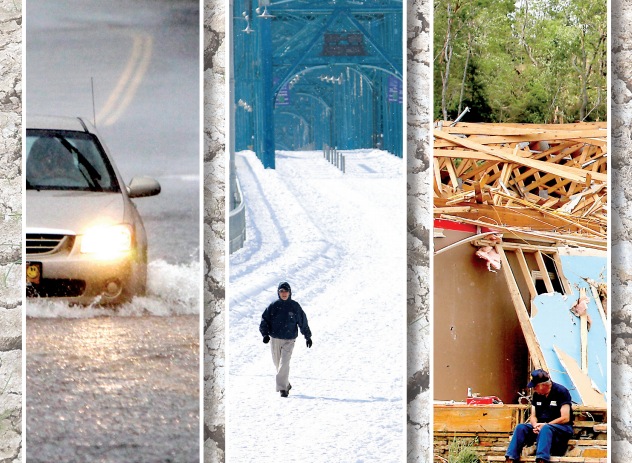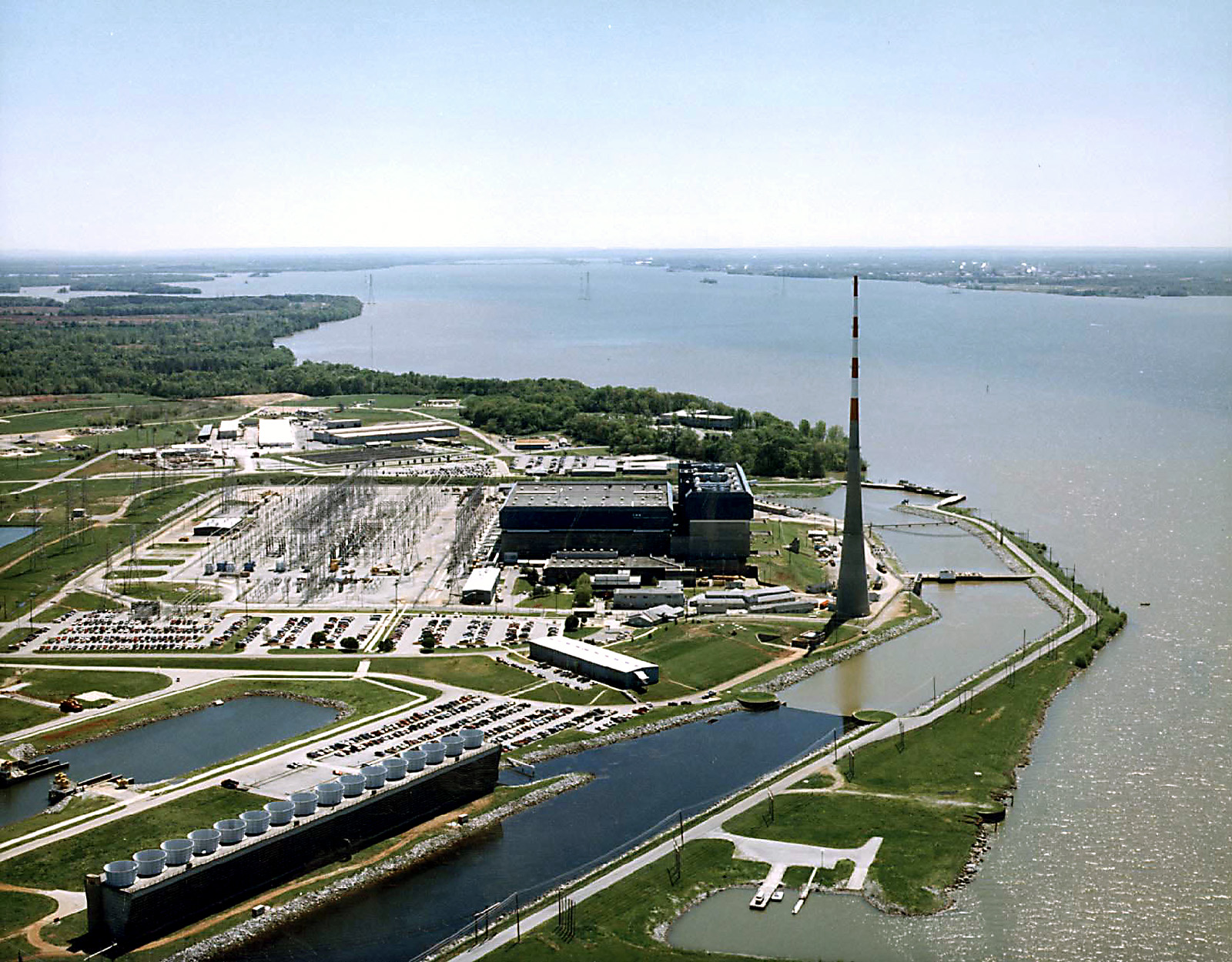Extreme.
It's the only word that does justice to this year's wacky tri-state weather.
This year saw a dozen tornadoes in Hamilton County alone -- 10 in a single April day. The single-day rainfall record of 10 inches came in September. That followed the driest month here ever -- August rainfall had totaled only 0.01 inch.
And it was hot: The third-hottest August recorded, following the fifth-hottest July and the sixth-warmest June.
But don't forget snow in February -- nearly a foot and the most since the blizzard of 1993. Then a rare November snow trace.
"Boy, we've had it this year, haven't we?" said Bill Tittle, Hamilton County's emergency management chief.
"I'm in my 14th year here, and this by far is the biggest year we've had."
CHATTANOOGA'S 2011 EXTREMES• Rainfall to date: 12.77 inches above normal with 63.9 inches for the year• Driest August on record: 0.01 inch of rain• Highest one-day rainfall: 9.4 inches on Sept. 5• Snowfall to date: Nearly 10 inches at the airport. The norm is 3.9 inches.• A dozen tornadoes: Two in February, 10 on April 27.YEAR IN REVIEWAs 2011 inches toward the history book, Times Free Press reporters recap the highlights and low points of the year.• Tuesday: Costly weather disasters vex residents, emergency responders• Wednesday: City, county elected leaders face challenges, change• Thursday: VW, Amazon openings soften economic blows• Friday: Reform dominates public education• Saturday: Top stories of 2011
Trouble everywhere
It wasn't just Chattanooga, either.
Federal climate scientists in August labeled this year one of the worst in American history for extreme weather.
With punishing blizzards, epic flooding, devastating drought and a heat wave that broiled a huge swath of the country, the 2011 weather was unrelenting and extraordinary.
Through October, the Natural Resources Defense Council tallied at least 2,941 monthly weather records broken by extreme events in communities across the United States.
The weather data counted 14 disastrous events that each resulted in more than a billion dollars in property damage -- an all-time record.
And the 14 events of the first 10 months of 2011 totaled five more than the previous record year of 2008.
The most expensive disaster was the super tornado outbreak of late April, which racked up more than $9 billion in damage and claimed 321 lives in the Southeast.
In the tri-state region, 47 tornadoes strafed Southeast Tennessee, Northeast Alabama and Northwest Georgia, killing 81 people.
"It was a bad year," said Derek Eisentrout, meteorologist with the National Weather Service in Morristown. "It was an incredibly dynamic year. The highs were higher, the lows were lower. And there was a lot more of everything."
Tittle said Hamilton County had another first -- the first year ever to receive two presidential disaster declarations for tornado damage.
The first was a public assistance declaration to help cities and the county pay for response to two tornadoes that hit Signal Mountain and Red Bank at the end of February.
The second declaration was to help public agencies and individuals after the April 27 disaster.
Tittle believes the region was spared a flooding disaster Sept. 5 when nearly 10 inches of rain fell in one day.
"That caused us some angst, but we didn't have any more than street flooding thank goodness, because it had been so dry in August that the ground and creeks just soaked it up," he said.
North Georgia wasn't so lucky. Fort Oglethorpe fire and rescue teams had to evacuate 34 residents by boat from Battlewood Apartments.
Drought and tornadoes also took a toll on Georgia and Alabama.
The drought helped place the Coosa River on one of Georgia's "Dirty Dozen" waterways, according to the Georgia Water Coalition.
Drought is a problem for the Coosa when Plant Hammond, a 57-year-old coal-fired power plant west of Rome, Ga., withdraws too much water.
"During times of drought when river flows dip as low as 460 million gallons a day, the river literally flows upstream at the plant's intake pipes," states the Georgia Water Coalition's 2011 report.
And releasing water back into the river at temperatures higher than river-temperature can affect water quality downstream, the report states.
Tallying costs
The summer's intense heat even hurt the Tennessee River and the Tennessee Valley Authority's ability to generate cheaper electricity at Browns Ferry Nuclear Plant in Alabama.
In early August, the utility had to bring the site's third reactor down to 50 percent power to avoid environmental sanctions because the water in the Tennessee River -- where the plant's cooling water is discharged -- already was at 90 degrees.
In 2010, TVA spent $50 million for replacement power for the same reason. That added 50 cents to $1 on most electric bills several months later, officials said.
EPB, the power distributor for seven area counties, budgets about $2 million a year for storm damage repair, President Harold DePriest said.
"This year we've hit $30 million," he recently told his board of directors. "We've had the first-, second- and third-worst storms for us this year; I don't want any more."
As a city-owned utility, EPB expects to eventually recover about $19 million of that through the Federal Emergency Management Agency, he said.
The Tennessee Emergency Management Agency still is calculating weather costs for the spring tornadoes, spokesman Dean Flener said.
"This is now the second year in a row we have experienced extreme weather in Tennessee," Flener said, noting that the May 2010 flood in Middle Tennessee was most costly disaster in Tennessee's history to that point at $4 billion.
Time will tell what the five presidential disasters declared in Tennessee in 2011 for tornadoes and flooding will cost. Those disasters involved more than two-thirds of Tennessee's 95 counties, he said.
Flener expects more extreme weather in 2012.
"The National Weather Service is predicting higher-than-average rainfall for Tennessee again in 2012, as we'll see a second straight year of La Nina influence on the U.S.'s weather impact," he said.
"So what we call wacky or extreme weather now, may become the new norm for weather in Tennessee, the Southeast and the U.S." Flener said.
Staff writer Dave Flessner contributed to this story.


